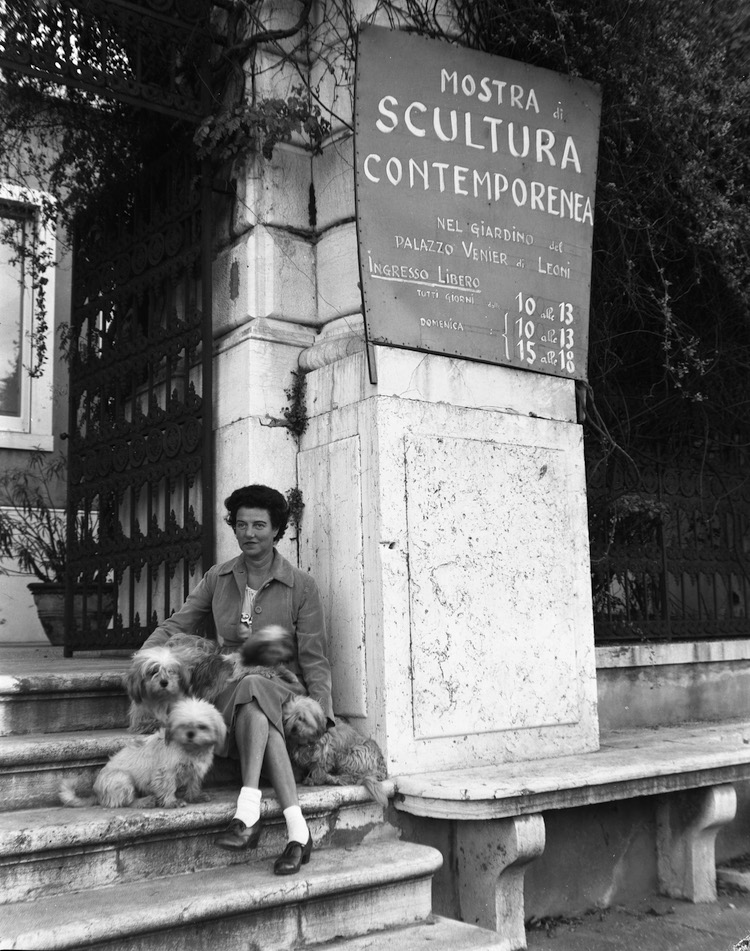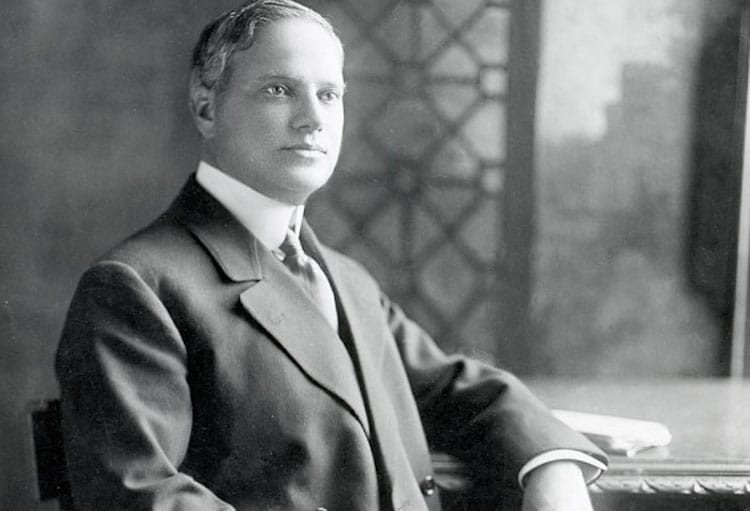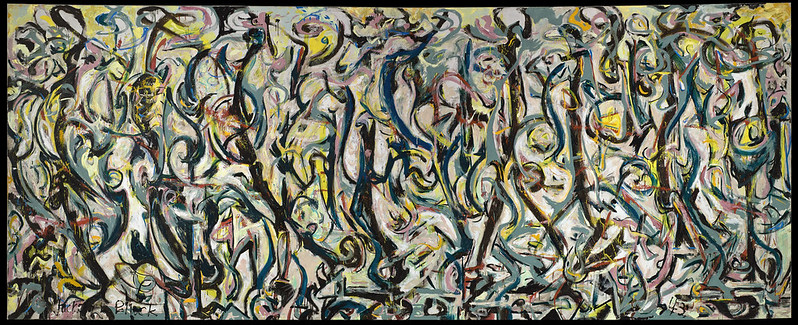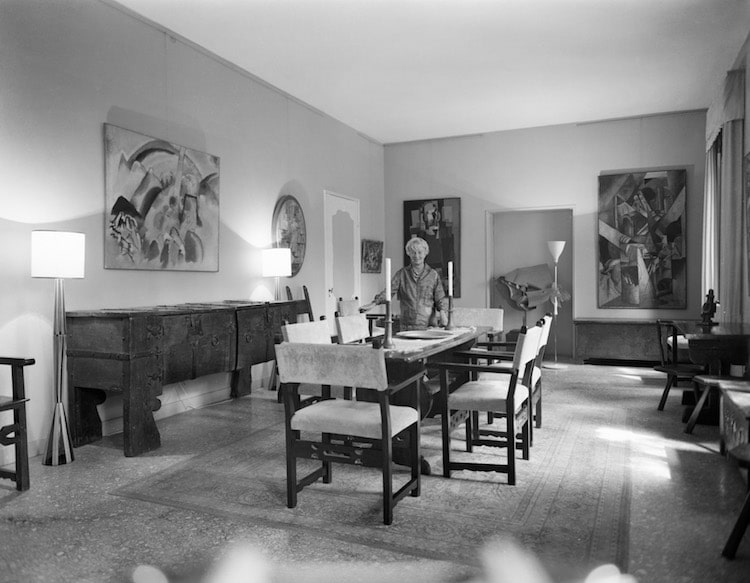Photo Archivio Cameraphoto Epoche.
Solomon R. Guggenheim Foundation, Venice, Gift, Cassa di Risparmio di Venezia, 2005.
Few household names mean more to modern art than Guggenheim.

Peggy Guggenheim on the steps of the Grand Canal terrace, on the occasion of the first show she organized at Palazzo Venier dei Leoni, Mostra di Scultura Contemporanea, Venice, September 1949. Photo Archivio Cameraphoto Epoche. Solomon R. Guggenheim Foundation, Venice, Gift, Cassa di Risparmio di Venezia, 2005.
This site, however, is not the only important Guggenheim museum of modern art.
Situated along Venice’s Grand Canal is the Peggy Guggenheim Collection, a palazzo-turned-museum founded byPeggy Guggenheim.
Learn about Peggy Guggenheim’s extraordinary life with these five priceless facts.

Benjamin Guggenheim (Photo:Wikimedia Commons[Public Domain])
Her father died aboard the Titanic.
Peggy Guggenheim was just 14 at the time of her father’s death.
She discovered Jackson Pollock.

Jackson Pollock, “Mural,” 1943
Jackson Pollock, Mural, 1943
In 1938, Guggenheim openedGuggenheim Jeune,her first gallery, in London.
I put myself on a regime to buy one picture a day, she later recalled.
Guggenheim would later name her discovery of Pollock as her greatest accomplishment, ranking higher than her collection itself.

Peggy Guggenheim in the dining room of Palazzo Venier dei Leoni, Venice, 1960s. Left to right: Vasily Kandinsky, Landscape with Red Spots, No. 2 (Landschaft mit roten Flecken, Nr. 2, 1913); Georges Braque, The Clarinet (La Clarinette, summer-fall 1912); Giacomo Balla, Abstract Speed + Sound (Velocità astratta + rumore, 1913–14); Louis Marcoussis, The Regular (L’Habitué, 1920); Umberto Boccioni, Dynamism of a Speeding Horse + Houses (Dinamismo di un cavallo in corsa + case, 1914–15); Albert Gleizes, Woman with Animals (Madame Raymond Duchamp-Villon) (La Dame aux bêtes [Madame Raymond Duchamp-Villon], completed by February1914; all works in the Peggy Guggenheim Collection. Photo Archivio Cameraphoto Epoche. Solomon R. Guggenheim Foundation, Venice, Gift, Cassa di Risparmio di Venezia, 2005.
The Louvre refused to house her collection during World War II.
Peggy Guggenheim in the dining room of Palazzo Venier dei Leoni, Venice, 1960s.
Left to right: Vasily Kandinsky, Landscape with Red Spots, No.

The Peggy Guggenheim Collection, Palazzo Venier dei Leoni, Venice. © Peggy Guggenheim Collection, Venice. Photo Matteo De Fina
2 (Landschaft mit roten Flecken, Nr.
Photo Archivio Cameraphoto Epoche.
Solomon R. Guggenheim Foundation, Venice, Gift, Cassa di Risparmio di Venezia, 2005.

Peggy Guggenheim with her Lhasa Apsos terriers on the Grand Canal terrace of Palazzo Venier dei Leoni, Venice, 1960s. Photo Archivio Cameraphoto Epoche. Solomon R. Guggenheim Foundation, Venice, Gift, Cassa di Risparmio di Venezia, 2005.
She moved into an unfinished 18th-century palazzo in Venice.
The Peggy Guggenheim Collection, Palazzo Venier dei Leoni, Venice.
Peggy Guggenheim Collection, Venice.
Photo Matteo De Fina
In 1947, Guggenheim moved to Venice.
Unfortunately, extenuating circumstances hindered the project’s construction, and the single-story palazzo was left unfinished.
The palazzo houses one of the greatest collections of modern art.
She is buried next to her 14 dogs.
Photo Archivio Cameraphoto Epoche.
Solomon R. Guggenheim Foundation, Venice, Gift, Cassa di Risparmio di Venezia, 2005.